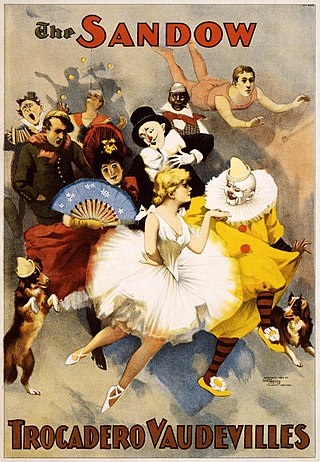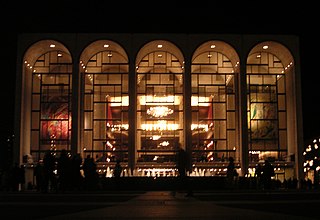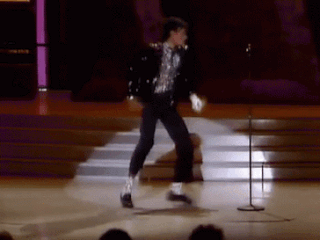Related Research Articles

Blues is a music genre and musical form that originated amongst African-Americans in the Deep South of the United States around the 1860s. Blues incorporated spirituals, work songs, field hollers, shouts, chants, and rhymed simple narrative ballads from the African-American culture. The blues form is ubiquitous in jazz, rhythm and blues, and rock and roll, and is characterized by the call-and-response pattern, the blues scale, and specific chord progressions, of which the twelve-bar blues is the most common. Blue notes, usually thirds, fifths or sevenths flattened in pitch, are also an essential part of the sound. Blues shuffles or walking bass reinforce the trance-like rhythm and form a repetitive effect known as the groove.
Jazz is a music genre that originated in the African-American communities of New Orleans, Louisiana, in the late 19th and early 20th centuries, with its roots in blues, ragtime, European harmony and African rhythmic rituals. Since the 1920s Jazz Age, it has been recognized as a major form of musical expression in traditional and popular music. Jazz is characterized by swing and blue notes, complex chords, call and response vocals, polyrhythms and improvisation.

Ragtime, also spelled rag-time or rag time, is a musical style that had its peak from the 1890s to 1910s. Its cardinal trait is its syncopated or "ragged" rhythm. Ragtime was popularized during the early 20th century by composers such as Scott Joplin, James Scott and Joseph Lamb. Ragtime pieces are typically composed for and performed on piano, though the genre has been adapted for a variety of instruments and styles.

Vaudeville is a theatrical genre of variety entertainment which began in France at the end of the 19th century. A vaudeville was originally a comedy without psychological or moral intentions, based on a comical situation: a dramatic composition or light poetry, interspersed with songs or ballets. It became popular in the United States and Canada from the early 1880s until the early 1930s, while changing over time.

The United States' multi-ethnic population is reflected through a diverse array of styles of music. It is a mixture of music influenced by the music of Europe, Indigenous peoples, West Africa, Latin America, Middle East, North Africa, amongst many other places. The country's most internationally renowned genres are traditional pop, jazz, blues, country, bluegrass, rock, rock and roll, R&B, pop, hip-hop/rap, soul, funk, religious, disco, house, techno, ragtime, doo-wop, folk, americana, boogaloo, tejano, surf, and salsa, amongst many others. American music is heard around the world. Since the beginning of the 20th century, some forms of American popular music have gained a near global audience.

The cakewalk was a dance developed from the "prize walks" held in the mid-19th century, generally at get-togethers on plantations where Black people had been enslaved, before and after emancipation in the Southern United States. Alternative names for the original form of the dance were "chalkline-walk", and the "walk-around". It was originally a processional partner dance performed with comical formality, and may have developed as a subtle mockery of the mannered dances of white slaveholders.
The music of Hawaii includes an array of traditional and popular styles, ranging from native Hawaiian folk music to modern rock and hip hop. Styles like slack-key guitar are well known worldwide, while Hawaiian-tinged music is a frequent part of Hollywood soundtracks. Hawaii also made a contribution to country music with the introduction of the steel guitar. In addition, the music which began to be played by Puerto Ricans in Hawaii in the early 1900s is called cachi cachi music, on the islands of Hawaii.
Jazz standards are musical compositions that are an important part of the musical repertoire of jazz musicians, in that they are widely known, performed, and recorded by jazz musicians, and widely known by listeners. There is no definitive list of jazz standards, and the list of songs deemed to be standards changes over time. Songs included in major fake book publications and jazz reference works offer a rough guide to which songs are considered standards.

The music of New York City is a diverse and important field in the world of music. It has long been a thriving home for popular genres such as jazz, rock, soul music, R&B, funk, and the urban blues, as well as classical and art music. It is the birthplace of hip hop, garage house, boogaloo, doo wop, bebop, punk rock, disco, and new wave. It is also the birthplace of salsa music, born from a fusion of Cuban and Puerto Rican influences that came together in New York's Latino neighborhoods in the 1960s. The city's culture, a melting pot of nations from around the world, has produced vital folk music scenes such as Irish-American music and Jewish klezmer. Beginning with the rise of popular sheet music in the early 20th century, New York's Broadway musical theater, and Tin Pan Alley's songcraft, New York has been a major part of the American music industry.

Jazz music has a long history in Australia. Over the years jazz has held a high-profile at local clubs, festivals and other music venues and a vast number of recordings have been produced by Australian jazz musicians, many of whom have gone on to gain a high profile in the international jazz arena.

Music history of the United States includes many styles of folk, popular and classical music. Some of the best-known genres of American music are rhythm and blues, jazz, rock and roll, rock, soul, hip hop, pop, and country. The history began with the Native Americans, the first people to populate North America.

The moonwalk, or backslide, is a popping dance move in which the performer glides backwards but their body actions suggest forward motion. It became popular around the world when Michael Jackson performed the move during the performance of "Billie Jean" on Motown 25: Yesterday, Today, Forever, which was broadcast in 1983. He included the moonwalk in tours and live performances. Jackson has been credited as renaming the "backslide" to the moonwalk and it became his signature move.

The robot, also called mannequin or dancing machine, is a street dance style—often confused with popping—that suggests the stilted movements of a dancing robot or mannequin. Roboting gained fame in the 1970s after Michael Jackson used the dance when he performed "Dancing Machine" with his brothers.

American popular music is popular music produced in the United States and is a part of American pop culture. Distinctive styles of American popular music emerged early in the 19th century, and in the 20th century the American music industry developed a series of new forms of music, using elements of blues and other genres. These popular styles included country, R&B, jazz and rock. The 1960s and 1970s saw a number of important changes in American popular music, including the development of a number of new styles, such as heavy metal, punk, soul, and hip hop.
The music of Baltimore, the largest city in Maryland, can be documented as far back as 1784, and the city has become a regional center for Western classical music and jazz. Early Baltimore was home to popular opera and musical theatre, and an important part of the music of Maryland, while the city also hosted several major music publishing firms until well into the 19th century, when Baltimore also saw the rise of native musical instrument manufacturing, specifically pianos and woodwind instruments. African American music existed in Baltimore during the colonial era, and the city was home to vibrant black musical life by the 1860s. Baltimore's African American heritage to the start of the 20th century included ragtime and gospel music. By the end of that century, Baltimore jazz had become a well-recognized scene among jazz fans, and produced a number of local performers to gain national reputations. The city was a major stop on the African American East Coast touring circuit, and it remains a popular regional draw for live performances. Baltimore has produced a wide range of modern rock, punk and metal bands and several indie labels catering to a variety of audiences.

Joe Frisco was an American vaudeville performer who first made his name on stage as a jazz dancer, but later incorporated his stuttering voice to his act and became a popular comedian.
Vaudeville in the Philippines, more commonly referred to as bodabil, was a popular genre of entertainment in the Philippines from the 1910s until the mid-1960s. For decades, it competed with film, radio and television as the dominant form of Filipino mass entertainment. It peaked in popularity during the Japanese occupation in the Philippines from 1941 to 1945. Many of the leading figures of Philippine film in the 20th century, such as Dolphy, Nora Aunor, Leopoldo Salcedo and Rogelio de la Rosa, began their showbusiness careers in bodabil.

Irvin Colloden Miller was an American actor, playwright, and vaudeville show writer and producer. He was responsible for successful theater shows including Broadway Rastus (1921), Liza (1922), Dinah (1923), which introduced the wildly popular black bottom dance, and Desires of 1927 starring Adelaide Hall. For thirty years he directed the popular review, Brown Skin Models, influenced by the Ziegfeld Follies but exclusively using black performers. "In the 1920s and 1930s, he was arguably the most well-established and successful producer of black musical comedy."

Irving Jones (1874–1932) was an American comedian and songwriter who specialized in a ragtime musical genre known as coon songs during their heyday in the late 19th and early 20th century. He sold close to 50 songs, many of which became enormously popular. A successful comic throughout his career, he has been hailed as a pioneer of ragtime music and both praised and criticized for his ability to take advantage of the popularity of the coon song genre, which often used stereotypical portrayals of African-Americans.
References
This article includes a list of references, related reading, or external links, but its sources remain unclear because it lacks inline citations .(January 2017) |
"Camel Walk." StreetSwing's Dance History Archives (2006): n. pag. Web. 9 July 2010.